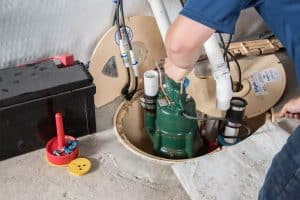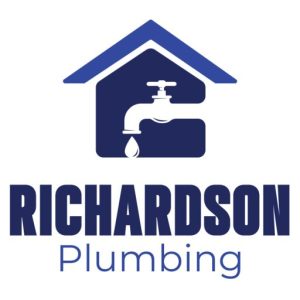
Identifying Sump Pump Malfunctions
Sump Pump Doesn’t Turn On
If your sump pump refuses to start, the problem could stem from a variety of sources. Begin by checking the power supply – ensure that the unit is securely plugged in and that the circuit breaker has not been tripped. If the outlet is functioning, turn your attention to the float switch, which may be jammed or obstructed by debris in the sump pit. Carefully inspect the switch and remove any foreign objects that could be hindering its movement.
Another potential culprit is a clogged impeller, the component responsible for pumping water out of the basin. Unplug the sump pump, remove the screen at the bottom, and clear away any debris that may be blocking the impeller’s rotation. If these troubleshooting steps fail to resolve the issue, the pump itself may be defective and in need of replacement.
Sump Pump Runs but Doesn’t Remove Water
If your sump pump is running but failing to effectively remove water from the basin, the problem could lie in the discharge system. Start by inspecting the check valve, ensuring that it is properly installed and not stuck in the closed position. A malfunctioning check valve can prevent water from being expelled, causing it to flow back into the pit.
Additionally, check the discharge line for any blockages or leaks. Debris, ice, or a cracked pipe can all impede the efficient drainage of water. Clean out the discharge line and repair any issues to restore proper water flow. If the intake screen at the bottom of the unit is clogged, remove and clean it to allow unobstructed suction.
Sump Pump Shuts Off Before Basin is Emptied
When a sump pump shuts down prematurely, the culprit is often a problem with the float switch. Ensure that the switch is adjusting freely and can move up and down without any obstructions. If necessary, follow the manufacturer’s instructions to make minor adjustments to the float switch position. In some cases, a faulty switch may need to be replaced to resolve the issue.
Overheating can also cause a sump pump to shut off before the basin is fully drained. This can occur if the pump is undersized for the job or if the sump pit is too small, leading to rapid cycling and premature burnout. Consulting a professional to assess your system and potentially upgrade to a more powerful pump may be necessary to address this problem.
Preventing Sump Pump Failures
Clogged Sump Pumps and Switches
One of the most common sump pump problems is clogging, which can occur in the sump pit, the pump’s mechanical parts, or the float switch. Dirt, debris, and even small objects can accumulate over time, impairing the pump’s efficiency or causing it to malfunction entirely.
To prevent clogging, it’s essential to regularly maintain and clean your sump pump system. Start by removing the lid and thoroughly inspecting the sump pit, clearing out any debris or sediment that has accumulated. Pay close attention to the float switch, ensuring that it moves freely without any obstructions. Additionally, consider installing an airtight, sealed lid to keep out unwanted contaminants and prevent water from evaporating back into the basement.
Frozen or Clogged Discharge Lines
Sump pumps rely on a discharge line to expel water away from the home’s foundation, but this critical component can become susceptible to freezing or clogging, rendering the pump ineffective. During the winter months, take proactive steps to prevent the discharge line from freezing, such as installing an IceGuard attachment or rerouting the line to a protected location.
To address clogging, regularly inspect the discharge line for any debris or obstructions and clear them out promptly. Consider adding a LawnScape Outlet at the end of the line to prevent small animals, leaves, and other materials from entering and causing blockages.
Power Loss and Backup Solutions
Power outages can be a significant threat to the functionality of your sump pump, leaving your home vulnerable to flooding during the most critical times. To mitigate this risk, invest in a high-capacity, battery-operated backup sump pump system. These redundant systems will kick in automatically when the primary pump loses power, ensuring that your basement remains dry even when the grid goes down.
Additionally, regularly test your backup system to ensure it is in working order and replace the battery as needed to maintain optimal performance.
Proper Sump Pump Installation and Maintenance
Importance of Correct Installation
Improper sump pump installation can lead to a host of problems, from inefficient water removal to premature system failure. It’s crucial to follow the manufacturer’s instructions to the letter, ensuring that the pump is properly stabilized, placed on a clean surface, and equipped with the necessary components like a check valve and air relief hole.
Failing to adhere to these installation guidelines can result in issues such as backflow, air pressure buildup, and an increased risk of clogging. If you’re unsure about the installation process or suspect that your sump pump was not set up correctly, it’s best to consult a professional plumber who can assess the system and make any necessary corrections.
Routine Maintenance and Inspections
Regular maintenance and inspections are the keys to keeping your sump pump in top-notch condition and preventing costly breakdowns. At least once a year, or before the onset of the rainy season, take the time to thoroughly clean and inspect your sump pump system.
Start by unplugging the unit and removing any debris or sediment from the sump pit. Check the float switch to ensure it moves freely, and lubricate the bearings if necessary. Inspect the discharge line for any blockages or leaks, and clear out any obstructions. Finally, test the pump by pouring water into the pit and verifying that it activates and expels the water as expected.
By staying on top of routine maintenance and addressing any issues promptly, you can extend the lifespan of your sump pump and have peace of mind knowing that your home is protected from the threat of water damage.
Sump Pump Replacement Considerations
Recognizing the Need for Replacement
While regular maintenance can help extend the life of your sump pump, there may come a time when replacement is the best course of action. Look for signs that your current pump is nearing the end of its useful life, such as unusual noises, a persistent musty odor, or visible corrosion and rust.
Additionally, if your sump pump is consistently failing to remove water from the basin or is running non-stop, these are clear indications that the unit is no longer up to the task and requires replacement. Ignoring these warning signs can lead to catastrophic flooding and costly water damage, so it’s crucial to address the issue proactively.
Choosing the Right Replacement Pump
When selecting a new sump pump, it’s essential to ensure that the unit is properly sized for your home’s specific needs. Consider factors such as the size of your sump pit, the vertical lift required to expel water, and the overall volume of water that needs to be removed. Opting for a pump that is too small may result in the same issues you experienced with the previous unit, while an oversized pump can lead to premature burnout and excessive energy consumption.
Additionally, look for sump pumps with features that enhance reliability and performance, such as cast-iron construction, powerful motors, and integrated backup battery systems. By investing in a high-quality, appropriately sized replacement, you can safeguard your home against future flooding and enjoy peace of mind for years to come.
Troubleshooting Sump Pump Noises
Grinding Noises
If your sump pump is emitting a grinding sound, the issue is likely related to the impeller, the component responsible for pumping water out of the basin. A stuck or damaged impeller can cause this unpleasant noise, indicating that the part needs to be replaced or the pump itself may require servicing by a professional.
Clanging Noises
Clanging noises from your sump pump often stem from vibrations in the discharge piping. To address this problem, try insulating the pipes to dampen the vibrations. If the noise persists, a plumber may need to adjust the positioning of the discharge line to eliminate the clanging.
Humming Noises
A sump pump typically operates with a low, steady hum, so if you notice a louder or more pronounced humming sound, it could signify an underlying issue. Start by cleaning the vent hole and resetting the check valve to see if that resolves the problem. If the humming continues, the impeller or other internal components may require inspection and potential replacement.
Banging Noises
Banging noises from your sump pump often indicate that the discharge pipes are not securely fastened, allowing them to rattle and bang against other surfaces. A plumber can properly secure the pipes using wiring and brackets to eliminate this disruptive noise. They may also need to inspect the internal wiring and components to ensure there are no other issues causing the banging.
By addressing these common sump pump noises promptly, you can not only restore the quiet operation of your system but also identify and resolve any underlying problems before they escalate into more significant issues.
Partnering with Professionals for Sump Pump Maintenance and Repair
While many sump pump problems can be addressed through DIY troubleshooting and maintenance, there are times when it’s best to enlist the help of a professional plumber. If you’re unsure about the root cause of a sump pump malfunction or lack the necessary expertise to safely and effectively repair the system, don’t hesitate to call in an expert.
Experienced plumbers can quickly diagnose the issue, recommend the appropriate course of action, and provide high-quality sump pump repair or replacement services. They can also offer valuable insights on upgrading your system, such as installing a backup battery or larger-capacity pump, to enhance the overall reliability and performance of your sump pump.
Moreover, regular maintenance checks by a professional can help identify potential problems before they escalate, allowing you to address them proactively and avoid the stress and expense of a full-blown sump pump failure. By partnering with a trusted plumber, you can have the peace of mind knowing that your home’s first line of defense against flooding is in capable hands.
We Provide Sump Pump Installation and Repair Services
Richardson Plumbing offers comprehensive sump pump services, including installation, replacement, and repair.
> Learn More
Maintaining a well-functioning sump pump is crucial for safeguarding your home against the devastating effects of water damage. By understanding the common sump pump problems and the steps to troubleshoot and fix them, you can take a proactive approach to preserving the integrity of your system and protecting your property.
Contact us (859-371-2239) for a free consultation!
—
 About Richardson Plumbing
About Richardson Plumbing
Richardson Plumbing offers a wide range of residential and commercial plumbing services using seasoned professionals and the highest quality parts and equipment available. We continually strive to exceed expectations by ensuring that each client receives prompt, outstanding service from our entire organization. Richardson Plumbing provides free consultations that explain all of your available options, so you can choose the scope of work that’s right for your home or business. When you have problems that just can’t wait until tomorrow, we can provide 24 hour emergency services.
> Learn More

 About Richardson Plumbing
About Richardson Plumbing